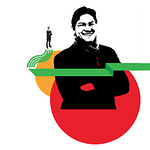By Jane Sparrow, culture expert
For many organisations, change is a constant. No sooner has one round of restructuring or change to focus around a new direction completed, it’s time for another change of direction or reshaping to occur. A new change process is identified and whilst efforts are made to make it ‘look different’ this time, in a world where change is constant, there is a real risk of low performance as people feel ‘here we go again’.
Avoid a Performance Dip
Keeping the energy high during change and helping people realise they are learning through the change process is a massive opportunity that many don’t intentionally capitalise upon. In short, it helps to avoid a performance dip. From those leaving as a result of the change, to those steering the organisation to a new future, all can be fuelled by the prospect that change brings learning and growth opportunities. So how can we use learning and development as a motivator throughout change?
A global healthcare organisation I worked with was due to lose one of their teams in the UK, as the function was being relocated to Eastern Europe. The continued performance of the existing UK team ahead of the move was vital to the success of the restructure and transition, so the change process had to be managed carefully. The team were briefed upfront on the move and using learning and development as a key driver, presented with a range of development opportunities the next year would bring for those who wanted to stay and assist with the transition. Including inspirational speakers, a suite of training programmes and the opportunity to gain recognised qualifications, the team felt valued, engaged and motivated by the opportunity to develop themselves as part of the change.
So what practical things can we do to reframe change in this positive way?
Switch the L&D lights back on
During change, often the lights go out on L&D, or programmes continue but they’re not aligned to the new belief. What we need to do is the opposite – turn the lights back on and show how learning is a core part of keeping people performing during a change process. Forward thinking businesses will actually invest more in L&D as a way of keeping people performing, but also reinforcing the new belief or strategy after the change. If we think about the behaviour change required to make any change process successful – that doesn’t come from one intervention – it’s from lots of interventions (large and small scale) – therefore if every L&D opportunity is reinforcing it, people are going to get there quicker. Aligning to the new belief, rather than the old, is critical.
Use L&D to help people feel in control
One of the biggest emotions about change is one of fear of the unknown and a loss of control. Put your people back in the driving seat of their change journey and set personal and/or team objectives for the change period. One of the big things people can control is making sure they get the best from the change.
Make change a trojan horse
Use the process of change as a chance to develop your managers into better leaders and people managers – it’s called change readiness. It comes from the restructuring (or change project) budget, it has a massive impact on how the change is able to be managed, the quality of care taken with people and results in a group of individuals that feel more positive about what they are managing because they are more confident, plus they’ve had some development as part of the process that they can take with them.
Use change to keep your existing talent – and attract some more
During change, it can appear that the door is closed to new talent ‘while we work out what’s happening’ – this is a bad strategy. It’s key to show you are always open to great talent and to even use a change process to demonstrate that you are a dynamic, nimble organisation. Change can also provide interesting and challenging new opportunities for your existing high performers with project, personnel and other management responsibilities for the taking.
Be involved with and equip change champions
During change, often change agent groups or champions are identified to support the momentum of the project. This is great, however, we find that the wrong kind of people often come forward or are nominated. For example, lots of change projects need Prophets, (those that get buy in on the vision), and Strategists, (those that make it happen), yet end up with a team of champions who all are great Storytellers and Coaches. Make sure you’re involved in this process so that the right champions are appointed and there’s a good mix of engagement styles in there. Then give that group of champions some development to enable them to be well rounded, with a range of engagement styles in their toolbox, helping them to see it’s a fabulous development opportunity and a critical role for ensuring performance doesn’t drop.
Turn up the light on existing development that may be dormant
If your senior leaders have had coaches – encourage them to reconnect with them and help them navigate their way through the change. Bring alumni groups back together to support each other and keep a positive spirit about how they can apply what’s been learned in the past together.
Work with managers on three lenses of change
There are three key lenses of change that are incredibly useful to focus managers on. Firstly, help them think about how they will keep their own performance high. Secondly, how they will manage their team throughout change to perform at their best. And thirdly, how they need to keep close to the customers, partners and communities that are the lifeblood of the organisation.
Bring the outside in for development during change
There’s a tendency to ‘look in’ rather than out during change and that’s fatal. Take the opportunity to gather and bring external perspective and insight into development programmes during change, helping managers to spend more time looking at things from the customer perspective as a way of keeping energised and continuing to develop relationships.
Ultimately, the big step change here is that we need our leaders and managers, and therefore the rest of our people, to rethink change as a positive thing. If we think of the highest performing companies, for example Apple, who has just recorded the biggest annual profit in corporate history, they never stand still. Responding to, as well as actively seeking, change is central to its culture and business approach and learning through change is just part of ‘how they do things round here’.
Jane Sparrow is passionate about enabling individuals and organisations to perform at their best. Author of ‘The Culture Builders: Leadership Strategies for Employee Performance’, she has worked with businesses across the world, including Sony, Google, Novartis, BBC Worldwide and Save the Children, to create and sustain high performance cultures. For more information visit www.theculturebuilders.com
Image courtesy of jscreationzs / FreeDigitalPhotos.net




